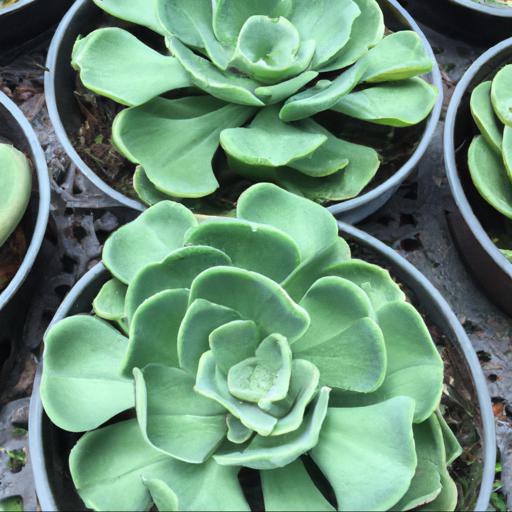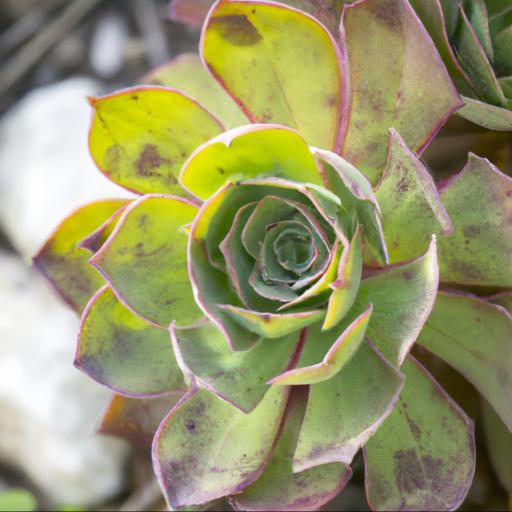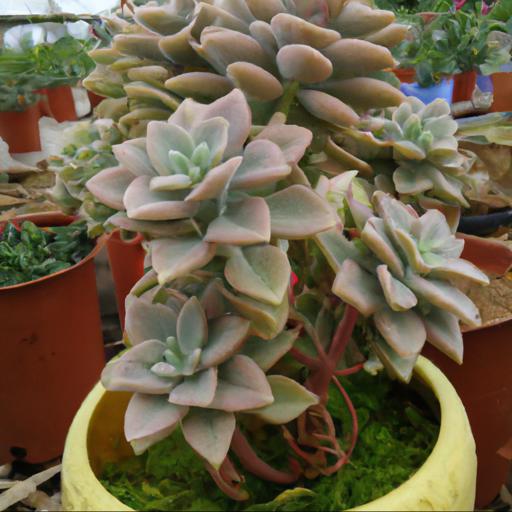The Crassulaceae family is a diverse group of plants found in many different climates and regions. This family of plants is commonly known for their succulent-like features and is often referred to as the “stonecrop” family.
The Crassulaceae family is composed of over 1,400 species of plants, ranging from small annuals to large shrubs and trees. These plants have a wide range of uses, from ornamental landscaping to medicinal remedies. With their unique characteristics and adaptability, Crassulaceae plants have become popular choices for gardeners around the world.
In this blog, we will explore the various features and uses of plants belonging to the Crassulaceae family.
Characteristics of crassulaceae

In the world of botany, plant families are paramount for certain reasons. One of the most important families of flowering plants is the Crassulaceae family, which is commonly referred to as the Stonecrop family or the Houseleek family. This group consists of about 33 genera and 135 species that typically have succulent leaves and star-like clusters of flowers.
The members of this family are found in habitats that have dry or acidic soil conditions and feature a variety of species from the genus Sedum, including many that are a favorite of gardeners. The Crassulaceae family is known for its adaptability to nearly any setting, making it a great choice for gardeners looking to add a touch of green to their yard or balcony.
For example, species such as Sedum spectabile, commonly known as showy stonecrop, is a showy perennial that has a low-growing and spreading habit, with sturdy stems and bright yellow or pink flowers. The colorful Sedum spurium, also known as red carpet or dragon’s blood stonecrop, is a low-growing succulent with tiny red flowers above small fleshy leaves. The Crassulaceae family contains many other charming specimens, such as the spectacularly flowering Crassula ovata, also known as jade plant or money plant.
This is a popular houseplant with shiny green leaves and star-shaped pink or white flowers. It’s also great for indoor growing as it requires little watering but will reward even the most novice of gardeners with an abundance of flowers.
The Crassulaceae family is known for its versatility and beauty, which makes it a top choice among gardeners. There’s a variety of species available, both indoors and outdoors, with interesting bloom times and unique characters that have something to offer everyone. The colorful addition of Crassulaceae family to any garden or balcony will bring life and beauty to any green space.
Common species of crassulaceae

As a UK garden expert, I feel it’s important for horticulturalists to be aware of the common species of plants found in the Crassulaceae family. This family is an interesting and sometimes enigmatic one, and it is made up of succulent plants that can give a stunning visual appeal to any garden.
The Crassulaceae family has over 850 different species, but some of the more recognisable ones are Sempervivum and Sedum. Sempervivum, more commonly known as ‘hens and chicks’, is well known for its low maintenance requirements and long-lasting blooms. This evergreen succulent comes in a variety of sizes and colours, and its star-shaped flowers make it a beautiful asset to any outdoor space.
Sedum, on the other hand, is a larger and more vibrant species of succulent plant. This is an ideal plant for areas of the garden that receive a lot of sunlight, and it produces an array of different coloured blooms throughout the year. Due to its drought tolerance and its ability to survive in poor soil conditions, Sedum is an easy choice for gardeners who want to add some whimsy to their gardens without additional maintenance demands.
Both Sempervivum and Sedum, as well as the many other species of the Crassulaceae family, provide the perfect way to make any garden look amazing. Whether you’re looking for a low-maintenance option for your outdoor space or you’re wanting to add some colour, the Crassulaceae family has the answer for you.
Benefits of growing crassulaceae

. Being a gardener in the UK means having to make decisions when it comes to which plants to grow in the garden, but when it comes to crassulaceae, the choice is clear.
This family of plants, which includes the popular jade plant and the vibrant, richly colored varieties of succulent plants, is particularly suited to UK gardens. The main benefit of growing crassulaceae is the vast range of shapes and sizes they come in. From the towering, tree-like forms of jade to the small and cushiony kalanchoe, each type of crassulaceae adds a unique look and feel to a garden.
Depending on the space and lighting available, you can choose from a range of different varieties to create a stunning display. Another advantage of growing crassulaceae is the relative ease of care. In comparison to other plants, these succulents have low light and water requirements and are exceptionally drought-tolerant.
It is worth noting though that due to their tropical origins, veining or drooping leaves can occur in cold climates. As such, it is best to avoid planting crassulaceae outdoors in winter.
Finally, crassulaceae are also a great choice for those looking to add some color to their garden. With their distinctive rosette shapes and an array of colors including deep purples and vibrant oranges and pinks, they are the perfect choice for a vibrant, textured look. With a little patience and care, you can create a stunning feature in your garden with crassulaceae.
Tips for growing crassulaceae
. When it comes to growing plants from the crassulaceae family, it pays off to be informed. The members of this diverse family include some of the most popular and beloved succulents like jade, Echeveria, and Sedum.
With so many options, it can be daunting to decide which plants to choose; however, if you do your research and follow some helpful tips, you’ll be on your way to cultivating a successful garden with crassulaceae. When selecting your plants, consider the type of environment you have available.
Crassulaceae thrive in bright, indirect sunlight and need to be placed in an area where they will receive at least four hours of bright light a day. If growing indoors, make sure to locate the plants in an area that gets at least four to six hours of bright but indirect sunlight.
For outdoor gardens, select a spot that receives plenty of morning sunlight but is shaded in the midday and evening. It is essential that your crassulaceae plants receive the right type of light in order to survive and thrive. In addition to light, your crassulaceae need the right type of soil.
While they can grow in a variety of soil types, they do best in an organic soil that is rich in nutrients and drains well. When using a commercial potting soil, make sure that it is labeled as suitable for succulents and cacti. If you are growing in an outdoor garden bed, make sure to amend the soil with plenty of organic matter or peat moss; these amendments help create the ideal environment for your plants.
Watering your crassulaceae correctly is also an important step to properly caring for these plants. Waiting until the soil has completely dried out between waterings is the best rule of thumb, as overwatering can quickly kill these delicate plants.
As a general guide, water once every week to 10 days, although the exact frequency may need to be adjusted depending on the amount of light and humidity. If you follow these tips, you’ll have a thriving crassulaceae garden in no time. With the right type of light and soil, frequent watering, and regular feeding you can bring out the true beauty and color of these beloved succulents. All that’s left is to sit back and enjoy the rewards of your hard work.
Our video recommendation
Conclusion
The Crassulaceae family is a large family of plants that includes succulents, herbs, and shrubs. They are known for their thick, fleshy leaves and stems, and many of them are drought-tolerant.
Most of the plants in this family are native to the Northern Hemisphere, and some are found in tropical regions. They are popular houseplants and many are used in ornamental gardens. Their diverse range of colors and shapes make them a favorite among gardeners.
FAQ
What are the common characteristics of plants in the Crassulaceae family?
The common characteristics of plants in the Crassulaceae family include succulent foliage, rosette growth habit, and flowers that are usually star-shaped or bell-shaped.
What are some of the most popular species of plants in the Crassulaceae family?
Some of the most popular species of plants in the Crassulaceae family include Sedum, Echeveria, Kalanchoe, Aeonium, Crassula, and Sempervivum.
How many genera are included in the Crassulaceae family?
There are approximately 35 genera included in the Crassulaceae family.
What are the main uses of plants in the Crassulaceae family?
The main uses of plants in the Crassulaceae family are for ornamental purposes, medicinal purposes, and for food.
What are the environmental requirements for growing plants in the Crassulaceae family?
The environmental requirements for growing plants in the Crassulaceae family include bright, indirect light, well-draining soil, and regular watering. They also prefer warm temperatures and high humidity.
What are the common pests and diseases that affect plants in the Crassulaceae family?
Common pests and diseases that affect plants in the Crassulaceae family include mealybugs, aphids, scale, whiteflies, root rot, and powdery mildew.

